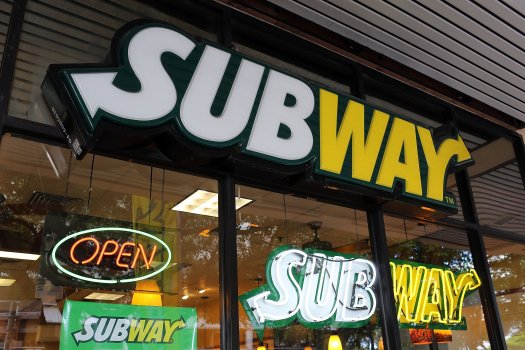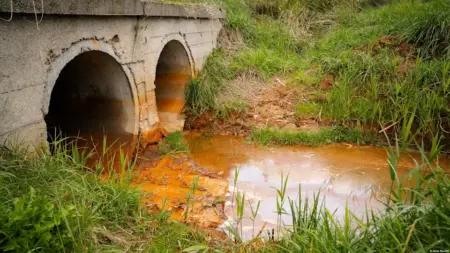Are we ready to discuss the Subway Tuna Sandwich drama?
What’s actually going on with this claim? We look into the lawsuit
Two California residents recently filed a lawsuit against Subway alleging the tuna used in Subway wraps and sandwiches isn’t actually tuna, but instead “a mixture of various concoctions that do not constitute tuna, yet have been blended together by [Subway] to imitate the appearance of tuna.”
The Tuna fiasco has caused quite a stir online with most claiming the tuna is fake and gross and slamming Subway – with little evidence.
The problem with the lawsuit is it doesn’t’ provide any evidence that Subway is using fake tuna. In fact, the attorneys who filed the suit won’t say what they think the alleged fake tuna really is. They’re only saying its something other than tuna.
Subway has spent the last few days insisting the tuna is real as they take on California residents – Karen Dhanowa and Nilima Amin – and their attorneys.
Until we get some evidence on the subway sandwich it’s hard to determine which side we’re on. But we’re unpacking the lawsuit and trying to figure out what either side would gain from lying.
So what’s in the Lawsuit?
Made up of 25 pages, the only thing the attorneys really say is the tuna Subway uses isn’t tuna, over and over again.
“In reality, the Products do not contain tuna nor have any ingredient that constitutes tuna.”
”The Products lack tuna and are completely bereft of tuna as an ingredient.”
“The filling in the Products has no scintilla of tuna at all.”
“The Products entirely lack any trace of tuna as a component, let alone the main or predominant ingredient.”
The attorneys say that “independent testing has repeatedly affirmed” that there’s no actual tuna in Subway’s tuna, but they provide no details on that testing. They also fail to indicate what the ‘fake’ tuna actually contains, only describing it as “a mixture of various concoctions that do not constitute tuna.” When pressed by CBS News to explain what those “various concoctions” might be, Alex Brown (one of the attorneys) didn’t have an answer.
“We are conducting tests to figure out what it is,” he told CBS. “The lab tests thus far have only told us what it isn’t.”
The lawsuit is only claiming Subways in California aren’t using real tuna and claims they have been doing this since January 21, 2017.

So why would California Subways sell fake tuna?
The lawsuit says California Subway locations “are deceptively saving substantial sums of money in manufacturing the Products because the fabricated ingredient they use in the place of tuna costs less money.”
A Subway spokesperson said the tuna used in their sandwiches is wild-caught, and the company’s website describes it as “flaked” – which means its made up of leftover pieces from a loin of tuna.
The reported average price of one ton of frozen, wild-caught skipjack (the kind of fish commonly used in canned tuna) – cost around $1,000 in 2020.
Each six-inch Subway tuna sandwich contains no more than 150 grams of tuna. There are 907,185 grams in a ton – enough to make about 6,000 subway sandwiches. At $1,000 a ton, the tuna on each individual Subway sandwich would cost the company about 16 cents.
Like the lawsuit claims – maybe there are cheaper substances out there that look, smell and taste like tuna. But at 16 cents per sandwich, is it worth it?
But why would they lie?
The attorneys are trying to bring together as many people as possible who have eaten a Subway tuna sandwich in California in the last three years and make it a class-action lawsuit.
The damages owed to a single plaintiff would likely to be minuscule – but when you have hundreds or thousands, you could make a decent sum of money.
According to several California attorneys who specialise in class-action suits, less than 1 per cent actually go to trial. Instead, the plaintiff’s attorneys try to apply as much pressure as possible to try to get those who they are suing to settle.
Settling works for defendants for several reasons. Firstly, they won’t have to keep paying lawyers to fight it. Secondly, once settled, press and interest on the suit drops and limits brand damage. And third, usually, the settlement payout is significantly less than what they might have to pay if they were in front of a jury. It also means those being sued don’t have to make a formal admission of wrongdoing and the settlement details remain private.
Regardless of whether Subway’s tuna is real, it might be cheaper for them to pay a settlement.
How long will we have to wait to find out the truth?
We have no idea. The attorneys suing Subway may release details about their study or perhaps Subway will somehow prove their tuna is real tuna. If it goes to trial, in seven years we might find out. If Subway settles we’ll never know.
By the time the truth does come to light, one thing is sure, no one will care.
……………………
FOLLOW US ON SOCIAL MEDIA AND SHARE WTX NEWS WITH YOUR FRIENDS AND FAMILY:
Facebook – Please like our page
Twitter – Twitter updates available in English and Arabic. Please follow us and we would love to hear from you
Instagram – Follow our pages in English and Arabic





